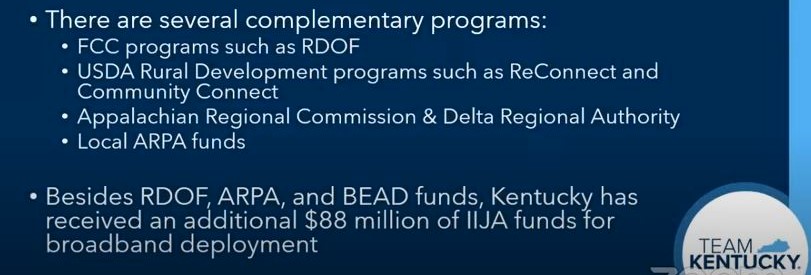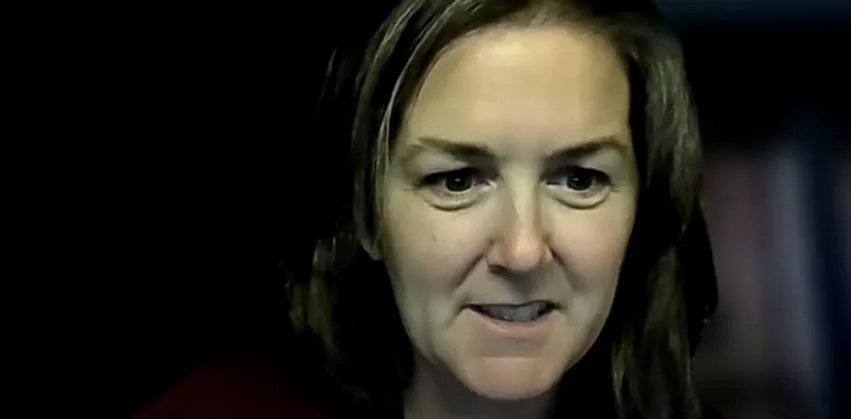
Several rural residents of south western Kentucky have been anxiously watching out of their windows, asking the same question week to week.
When, oh when, will high-speed fiber optic internet arrive?
And the answer: soon.
In a comprehensive update with local and regional leaders during Monday afternoon’s Pennyrile Area Development District digital conclave, Kentucky Office of Broadband Development Executive Director Meghan Sandfoss confirmed the state’s build out continues to go as planned — and better than honestly expected.
Her office was established within the efforts of the 2022 Kentucky General Assembly, and with it came a list of priorities for the Commonwealth:
— Bring options to “no service” locations
— Turn attention to unserved and underserved areas, particularly those of lower population density
— Attack regions where public funds were either limited or altogether unavailable
— And construct networks capable of preferred 1 GB symmetrical speeds as the ceiling, and 100 MB symmetrical speeds as the floor
For 2023, and beyond, business, health, education and pleasure all require reliable connection to the Internet.
Behind the federal Broadband Equity Access and Deployment Program, signed into law by U.S. President Joe Biden, Sandfoss noted that Kentucky received $1.1 billion to rebuild its networks. The bill asked for more than $42 billion, and states were guaranteed at least $100 million for internet infrastructure improvements.
The Commonwealth, she added, needed that much help, and that the point has been to finish service skeletons that would otherwise be ignored by subsidy or “unlikely to ever happen.”
It’s the 15th largest allocation in the country.
The first round of financial tranches have already been distributed, with several construction projects either underway or completed. She said most, if not all, contracts and subcontracts are under the licensed Pennyrile Rural Electric Cooperative.
For Caldwell County, this was nearly $1.4 million with a match, serving 339 locations.
For Lyon County, this was nearly $1 million with a match, serving 333 locations.
For Christian County, this was three projects totaling nearly $4.6 million with a match, serving 1,376 locations.
For Todd County, this was $5 million with a $5.3 million match, and 2,750 locations served.
And for Trigg County, this was almost $2 million with a match, and 800 locations served.
Round two, she said, will be even more effective — branching out deeper into rural communities.
For Caldwell County, this means another $330,000 and a match for 32 more locations served.
For Lyon County, this means another $400,000 and a match for 70 more locations served.
For Christian County, this means another $1.3 million and a match for 270 more locations served.
For Todd County, this means another $2.4 million and a match for 634 more locations served.
For Trigg County, it’s another $2.3 million and a match for 659 more locations served.
And for Hopkins County, it’s going to be a $4.9 million payout with a $5.5 million match to serve 817 locations.
Asked if fiber optic internet was the only solution for rural Kentuckians, Sandfoss said other options can be sought if that kind of infrastructure is limiting or expensive.
Going into 2023, Sandfoss said more than 100 projects serving 56,000 locations across the state had already been accounted for, were under construction or have been completed.
It’s also worth noting the BEAD program specifically allows the use of federal matching funds under COVID-19 relief statutes — like the CARES Act, the Consolidated Appropriations Act of 2021 and the American Rescue Plan Act of 2021.
As such, Sandfoss said many west Kentucky municipalities have already embraced the coming internet buildout.
Following those initial listening surveys and map pings, Sandfoss confirmed more than 15,000 locations were successfully challenged and delivered to officials with the Federal Communications Commission — only further broadening the state’s internet map.
Only a few, she said, had capable services already in place.
For more information, visit broadband.ky.gov.


FULL DISCUSSION:






